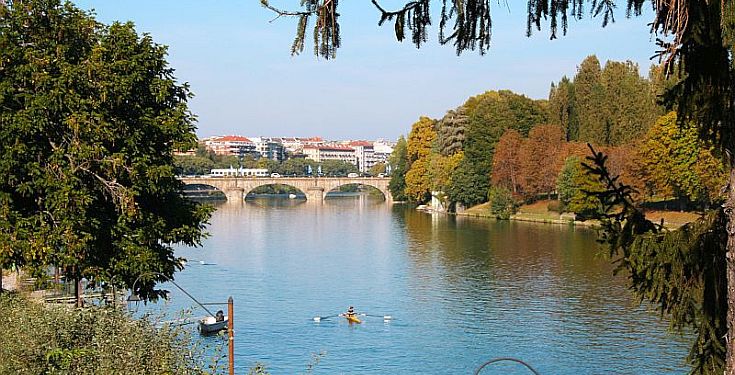The Po River: Italy’s Lifeline of History, Culture, and Agriculture

Flowing majestically through the heart of northern Italy, the Po River stands as a symbol of the nation’s rich heritage, cultural diversity, and natural bounty. Stretching over 405 miles (652 kilometers), the Po is the longest river in Italy and has played a central role in shaping the landscapes, histories, and cultures of the regions through which it flows.
Geographical and Historical Significance: The Po River originates in the Cottian Alps of northwestern Italy, near the border with France, and meanders eastward through the picturesque landscapes of the Po Valley. It passes through major cities such as Turin, Milan, and Piacenza before emptying into the Adriatic Sea near Venice.
Throughout history, the Po has been a vital lifeline for the peoples of Italy, serving as a source of water, transportation, and sustenance. In ancient times, it formed the northern boundary of the Roman Empire and witnessed the rise and fall of medieval city-states and empires. The riverbanks are dotted with historic towns, castles, and fortresses, each bearing witness to the rich tapestry of Italian history and civilization.
Cultural and Artistic Legacy: The Po has inspired generations of artists, writers, and musicians with its timeless beauty and romantic allure. From the epic poems of Dante Alighieri to the haunting melodies of Giuseppe Verdi’s “La Traviata,” the river has been a source of inspiration for countless works of art and literature. Painters such as Leonardo da Vinci and Canaletto captured its scenic vistas and vibrant landscapes in their masterpieces, while writers like Alessandro Manzoni and Gabriele D’Annunzio chronicled their journeys along its banks in their novels and poems.
The cities and towns along the Po are home to a wealth of cultural treasures, from the Renaissance palaces of Mantua and Ferrara to the Gothic cathedrals of Cremona and Ravenna. The region’s architectural heritage reflects the diverse influences of Roman, Byzantine, and Renaissance civilizations, creating a unique blend of styles and traditions that is truly emblematic of Italian culture.
Economic Importance: The Po River is not only a cultural icon but also a vital economic artery for Italy. Its navigable waters facilitate the transportation of goods and commodities, including rice, wine, and textiles, supporting industries such as agriculture, viticulture, and manufacturing. Ports along the river, such as Piacenza and Ferrara, are major hubs for domestic and international trade, handling millions of tons of cargo each year.
The Po also plays a crucial role in the region’s tourism industry, attracting millions of visitors each year with its scenic beauty, historic landmarks, and vibrant cultural scene. River cruises offer travelers a leisurely way to explore the river’s many attractions, from the medieval villages of the Po Valley to the natural wonders of the Adriatic coast.
Environmental Conservation and Sustainability: In recent years, efforts have been made to protect and preserve the ecological health of the Po River and its surrounding habitats. Initiatives to reduce pollution, restore wetlands, and promote sustainable agriculture aim to ensure that future generations can continue to enjoy the river’s natural beauty and resources.
From hiking and cycling along its scenic riverbanks to birdwatching and fishing along its tranquil waters, the Po offers endless opportunities for outdoor recreation and exploration. Whether exploring historic landmarks, sampling local cuisine, or simply soaking in the breathtaking views, visitors to the Po region are sure to be captivated by its timeless charm and allure.
Conclusion: In conclusion, the Po River stands as a symbol of Italy’s natural beauty, cultural richness, and historical significance. From its source in the Cottian Alps to its delta in the Adriatic Sea, the river’s journey reflects the enduring spirit of the Italian people and the timeless rhythms of the natural world. As we navigate the challenges of the 21st century, the Po remains a source of inspiration, fascination, and pride for all who encounter its majestic waters.




